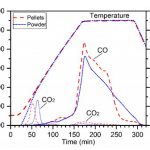






Dr. Dogan Paktunc, Chief Scientist of Natural Resources Canada’s CANMET Mining at ICDA 2018
Dr. Dogan Paktunc, Chief Scientist of Natural Resources Canada’s CANMET Mining addressed the International Chromium Development Association in April of 2018, providing details on the research that he has completed to date into the new direct reduction method for refining this chromite.

 Presentation to the ICDA: Direct reduction of chromite for ferrochrome production (DRC) by Dr. Dogan Paktunc, Chief Scientist of Natural Resources Canada’s CANMET Mining
Presentation to the ICDA: Direct reduction of chromite for ferrochrome production (DRC) by Dr. Dogan Paktunc, Chief Scientist of Natural Resources Canada’s CANMET Mining
Additional Research Paper: Calcium Chloride Assisted Segregation Reduction of Chromite Influence of Reductant Type and the Mechanism

 Calcium Chloride Assisted Segregation Reduction of Chromite Influence of Reductant Type and the Mechanism by Dawei Yu ID and Dogan Paktunc
Calcium Chloride Assisted Segregation Reduction of Chromite Influence of Reductant Type and the Mechanism by Dawei Yu ID and Dogan Paktunc
Abstract: This paper describes an innovative process for the production of ferrochromium alloy via segregation reduction of chromite at 1300 ◦C in the presence of calcium chloride. Both charcoal and petroleum coke were used as the reductant.
Individual polycrystalline ferrochrome carbide particles were produced, with their particle size and shape resembling that of the starting carbon particles. Interactions among calcium chloride, clinochlore, and chromite resulted in the formation of Ca-bearing chromite, wadalite, and gaseous chlorides.
Monocrystalline ferrochrome carbide whiskers were formed only when charcoal in the presence of calcium chloride was used to reduce the chromite fraction containing large amounts of siliceous gangue. Incorporating thermodynamic evaluations, a possible segregation reduction mechanism is suggested based on the characterization of the products using scanning electron microscopy, energy dispersive spectroscopy, X-ray powder diffraction, and electron probe microanalysis, combined with thermogravimetric analysis.
Metallization within chromite particles was minimized, which is suggested to be due to the ubiquitous presence of molten and gaseous calcium chloride between the chromite and carbon particles, and especially in the porous rim of the chromite particles during reduction, resulting in restricted metallization only on the carbon particles.
By: Dawei Yu and Dogan Paktunc
